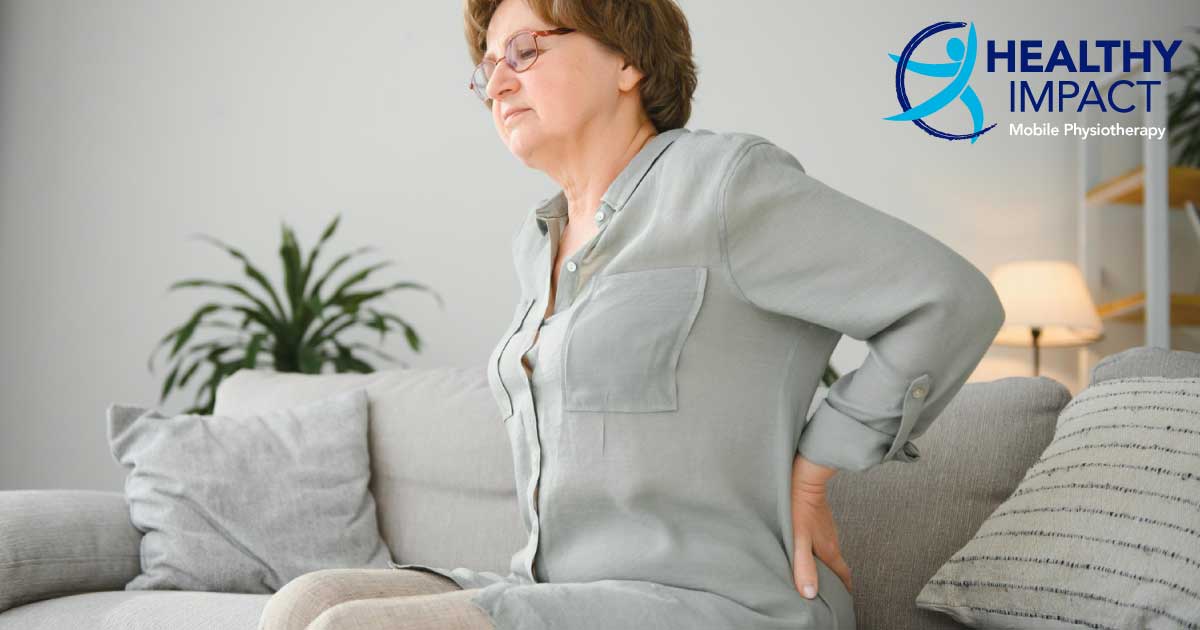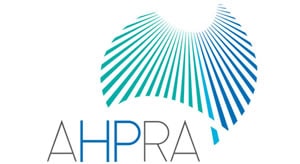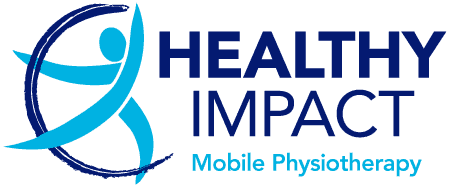Low back pain: Causes, types, assessments, and treatments.
Low back pain (LBP) is the leading cause of disability worldwide. More than 540 million people are affected by activity-limiting low back pain at any one time. This pain is the leading cause of disability in people under the age of 45, the second most common cause for visiting a doctor and job absence, the 5th most frequent cause of hospitalisation, and the 3rd most common cause of surgery.
Around 25% of Australians suffer from low back pain daily and 50% of Australians experienced this pain in the past month.
With 80% of the population reporting at least one episode of LBP in their lifetime. This highly prevalent and disabling ailment costs Australia $4.8billion each year in the management of low this condition. Back pain reduces Australia’s GDP by AU$3.2billion per annum and is the most common condition keeping older Australians (aged 45-64) out of the workforce.
The global burden from low back pain has doubled in the last 25 years, and the prevalence of the condition is expected to continue to increase with an aging and an increasingly sedentary population.
Improving the burden
Monash University researcher, Professor Rachelle Buchbinder said: “The burden from low back pain has reached a tipping point where the condition is growing rapidly, is poorly understood and is being mismanaged medically – at cost both to the patient and to the healthcare system”.
In the final Lancet paper, Professor Buchbinder recommends an “urgent global call to action”. The call to action seeks:
- Coordinated international leadership to drive transformational change to stop fragmented and outdated models of care.
- Development of evidence-based medical responses to low back pain, emphasising the concept of ‘positive health’ – the ability to adapt and self-manage.
- Avoidance of harmful and useless medical treatments by funding only proven safe, effective and cost-effective. “Across the globe (there is) inappropriately high use of imaging, opioids, spinal injections and surgery. Doing more of the same will not reduce low back pain disability nor its long-term consequences.”
- Public health campaigns to address the widespread misconceptions about the causes and prognosis and the effectiveness of treatments.
- Funding to support research that tests promising solutions to the problem of low-value care and addresses fundamental gaps in our understanding of how to prevent and manage the condition.

Types of low back pain
- Acute back pain which lasts for a short duration, usually less than three months. It often occurs suddenly and is usually caused by injury or trauma to the back, such as muscle strain or sprain, herniated disc, or spinal fracture. Acute back pain can be severe but tends to improve with time as the underlying cause heals. Treatment for acute back pain often involves education, rest, gentle exercises, activity modification and short-term pain or anti-inflammatory medication.
- Chronic back pain which persists for an extended period, typically longer than three months. It may develop gradually or result from unresolved or repeated acute back pain injuries. Chronic back pain is commonly caused by reduced muscle strength and joint stability to support natural body movement and to safeguard against external forces like lifting. Back pain can also be caused by degenerative conditions like arthritis, structural abnormalities, nerve damage, or ongoing stress on the spine.
Causes of low back pain
- Muscle strain and ligament sprain (most common)
- Just like an ankle injury. Overuse or sudden awkward movements can lead to muscle strain or ligament sprain. This is caused by underlying muscle weakness/control or excessive force/load in which the body is unable to withstand during a single action or with repeated actions.
- Degenerative disc disease
- The gradual wear and tear of intervertebral discs over time, usually from injury(s) and lack of protective back strength, can result in reduced disc height and increased pressure on surrounding structures, causing chronic pain. Just like your knee, improving muscle strength can reduce pain, improve function and slow future degeneration.
- Herniated disc
- The displacement of the inner core of the intervertebral disc can irritate nearby nerves, triggering persistent low back pain for a few months. Approximately 95% of disc herniations in the lumbar area occur at L4-L5 or L5-S1. Over 85 to 90% of patients with an acute herniated disc experience relief of symptoms within 6 to 12 weeks without any treatments. Patients without radiating nerve pain down a leg, notice an improvement in even less time. The goal here is education, pain management and maintaining as much muscle strength and function without aggravation until symptoms reduce. Then a graded approach to restoring back strength and to prevent future reinjury.
- Specific pathological causes.
- This includes vertebral fractures, spondylarthritis, cancer of the spine, infections and foraminal or spinal stenosis. Medical management is appropriate for these conditions.
- Scoliosis
- Abnormal curvature of the spine can cause uneven pressure on the vertebrae, resulting in pain and sciatica. Finch therapy is an effective tool for reducing uneven pressure on the spinal vertebrae. In addition, improving posture by strengthening anti-gravity muscles is also an important focus of back pain treatment.
- Joint dysfunction.
- Increased trunk stiffness and decreased range of movement and the speed of lumbar movement are associated with LBP. Dysfunction in the sacroiliac joint or facet joints can contribute to trunk stiffness, low back pain and sciatica. Finch therapy is quick and effective at treating pelvic tilt, sacroiliac joint dysfunction, poor facet joint movement and functional leg length differences. This process improves pelvic and thoracic joint function often associated with reduced movement, movement variability and back pain.
- Lifestyle factors.
- Obesity, sedentary behaviours, repetitive actions, smoking, alcohol consumption, unhealthy diet, stress, anxiety, and inadequate sleep have all been moderately associated with low back pain. These behaviours increase stress and inflammation markers in the body and limit the body’s ability to heal itself. These behaviours are also linked with reduced physical activity, reduced muscle mass and movement function. This leaves the low back at risk of injury especially with additional or awkward loads or speed with movement.
Assessment of Low Back Pain
Accurate assessment is crucial for devising effective treatment plans. This involves a thorough examination, including:
- Clinical history
- Detailed information about the onset, duration, and nature of pain, as well as any exacerbating or alleviating factors.
- Physical examination
- Comprehensive musculoskeletal and neurological examinations to identify specific areas of dysfunction.
- Imaging
- Imaging is only necessary if symptoms are severe or not improving with time and physiotherapy. Your GP will determine if imaging is appropriate. X-rays, MRIs, or CT scans can provide a detailed view of the spine, helping to identify structural abnormalities.
- Functional assessment
- Evaluating the patient’s functional limitations and impact on daily activities provides insights into the causes and likely severity of LBP.

Treatments for low back pain
Exercise has consistently shown benefits in managing low back pain. Evidence indicates education and exercise is the first line treatment for back pain. Programs incorporating strengthening, flexibility, and aerobic exercises are effective.
- While medications can provide short-term relief, they are not typically recommended as standalone treatments for chronic low back pain due to potential side effects and risks of dependency. Nonsteroidal anti-inflammatory drugs (NSAIDs), acetaminophen, and muscle relaxants may be prescribed for acute exacerbations. However, their long-term efficacy is limited, and the focus should be on addressing underlying biomechanical and psychosocial factors.
- Education and self-management strategies. Providing patients with education about their condition, recovery timeframes, outcome expectations, reassurance about the benign nature of most cases of low back pain, can be empowering. One of the most important treatments is teaching patients self-management strategies including, safe exercises, how to improve posture, how to manage sleep with back pain, proper movement and lifting techniques and how to stay active with back pain which often leads to faster recovery times. Education around how to gradually and independently introduce healthier behaviours can also be helpful.
- Range of movement exercises and isometrics to improve circulation, reduce pain and minimise fear of movement.
- Restore correct biomechanical function. The goal here is to reduce trunk stiffness and promote back freedom and variability of movement. Finch therapy is a quick and effective tool for reducing shearing forces on the spinal vertebrae. Finch follows a standardised physical assessment process that ensures it can quickly and effectively identify and treat pelvic tilt, sacroiliac joint dysfunction, poor facet joint movement, a functional leg length difference and any transverse costal joint dysfunctions. It is painless and provides long term improvements in trunk stiffness and helps rule out many causes of non-specific back pain that may be hindering the rehabilitation process.
Strengthening anti-gravity muscles improve posture and downward pressure on the body’s joints helping reduce tightness and pain. Physiotherapists often have a good eye for identifying poor motor or muscle control during movements. Poor muscle control of a joint or joint(s) is a common cause of back pain.
A tailored program can help treat any identified motor control problems. It is essential to improving biomechanical function before adding load with a graded strength program to ensure any increase in back pain during rehabilitation is minimised.
- Manual therapy. Techniques such as spinal manipulation, mobilization, and massage therapy have been found to alleviate low back pain, particularly in acute back pain cases. Techniques like myofascial release and trigger point therapy can also help reduce muscle tension and pain.
- Graded return to general exercise. Evidence indicates lots of different types of exercise have a positive effect on LBP. No one type seems to be superior. Exercises should focus on the human being not just the back. Exercise that people enjoy, is easy for them to do and does not irritate the back will often help and have a positive effect.
- Graded strength program. Once the pain has reduced, our goal is now to gradually strengthen muscles, without irritating the back, to a level that at least matches the variable functional demands of daily living. This is to ensure you can return to activities that are meaningful to you with a significantly reduced risk of reinjury. This program should not only include strengthening back muscles but also include muscles of the adjacent areas like legs, hips, abdominals (core) and shoulders.
- Psychosocial factors. Addressing psychological factors such as depression, anxiety, and fear-avoidance beliefs is crucial in managing low back pain. Interventions like mindfulness-based stress reduction (MBSR), acceptance and commitment therapy (ACT), and cognitive-behavioural therapy (CBT) have shown effectiveness in reducing pain intensity and improving function. Addressing social factors like access to a equipment to independently do home exercises, access to home or work via hill or stairs, issues with family and friends, living arrangements are all important factors to help improve treatment outcomes and self-management.
- Surgical interventions. Usually only recommended in severe cases with indications of serious structural conditions or when physical therapy over a few months is not effective.
The management of low back pain demands a multifaceted approach that addresses the diverse and interrelated factors contributing to this prevalent condition. Low back pain represents a significant burden on individuals, healthcare systems, and economies worldwide. With millions affected by activity-limiting pain and its associated disabilities, the urgency for effective management strategies is paramount. By adopting a multidisciplinary approach that integrates these treatments and focuses on patient-centred care, healthcare professionals can effectively manage low back pain, improve patient outcomes, and enhance overall quality of life.

For information on how we may help you
For more information about how Healthy Impact can help visit either our “Treatments” or “Conditions” page
Reference list
Abdel Shaheed, C., et al. (2019). Efficacy, tolerability, and dose-dependent effects of opioid analgesics for low back pain: a systematic review and meta-analysis. JAMA Internal Medicine, 179(8), 958-968.
Al Qaraghli MI, De Jesus O. Lumbar Disc Herniation. [Updated 2023 Aug 23]. In: StatPearls [Internet]. Treasure Island (FL): StatPearls Publishing; 2024 Jan-.
American Academy of Orthopaedic Surgeons. (2020). Low Back Pain.
American College of Physicians. (2017). Clinical guidelines on low back pain: ACP releases guideline for treating nonradicular low back pain in primary care.
Buchbinder, R., van Tulder, M., Öberg, B., Costa, L. M., Woolf, A., Schoene, M., … & Turner, J. A. (2018). Low back pain: a call for action. The Lancet, 391(10137), 2384-2388.
Chou, R., et al. (2017). Noninvasive Treatments for Low Back Pain. Journal of the American Medical Association, 317(6), 619-624. doi:10.1001/jama.2016.2323
Cormack, B., (2024). What does the evidence tell us is the best exercise for back pain? Physio Network
Coulther, I. D., et al. (2019). Different doses, durations, and delivery methods of spinal manipulation and mobilization for low back pain: a systematic review and meta-analysis. Spine Journal, 19(3), 394-412.
Hoy, D., et al. (2012). The global burden of low back pain: estimates from the Global Burden of Disease 2010 study. Annals of the Rheumatic Diseases, 73(6), 968–974. doi:10.1136/annrheumdis-2013-204428
Kamper, S. J., et al. (2015). Multidisciplinary biopsychosocial rehabilitation for chronic low back pain: Cochrane systematic review and meta-analysis. British Medical Journal, 350, h444.
Mayo Clinic. (2020). Back pain.
Mashinchi S, Yousefzadeh-Chabok S, Dibavand M. Demographic Characteristics and Family History of Lumbar Problems in Patients with Lumbar Disc Degenerative Diseases Candidate for Surgery. Iran J Neurosurg 2020; 6 (3) :121-132. Musculoskeletal Australia, (2020). Understanding Back Pain.
National Institute of Neurological Disorders and Stroke. (2019). Low Back Pain Fact Sheet.
National Institute of Arthritis and Musculoskeletal and Skin Diseases. (2019). Back pain.
Oesch, P., et al. (2014). A multidisciplinary network for patients with chronic low back pain: protocol for a randomised, controlled trial. BMC Musculoskeletal Disorders, 15(1), 431.
O’Sullivan, P. B., et al. (2019). Exercise therapy for low back pain: a systematic review and meta-analysis. Journal of Science and Medicine in Sport, 22(6), 618-628.
Panjabi, M. M. (2006). A hypothesis of chronic back pain: ligament subfailure injuries lead to muscle control dysfunction. European Spine Journal, 15(5), 668–676. doi:10.1007/s00586-005-0954-y
Veehof, M. M., et al. (2016). Mindfulness- and acceptance-based interventions for the treatment of chronic pain: a meta-analytic review. Cognitive Behaviour Therapy, 45(1), 5-31.
World Health Organisation, (2023). Low back pain.








